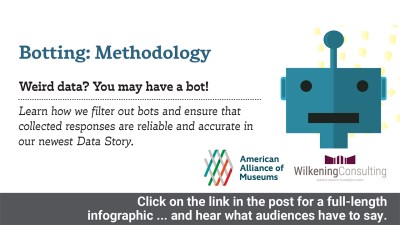This article originally appeared in the May/June 2012 edition of Museum magazine.
An excerpt from A Life in Museums: Managing Your Museum Career, edited by Greg Stevens and Wendy Luke, The AAM Press, April 2012.
When we think about museum leaders, we usually think of museum directors, senior staff members, and scholars who publish in museological journals. We often forget that leadership can happen on any level; there’s no need to be at the top of the organizational chart to be a leader. Of course, museum directors are tasked with providing leadership to the entire institution. But other museum staff can accept or create leadership roles by choice and through example. You can think and act like a leader, even within a very small scope. Being a leader means crafting a vision, inspiring change, encouraging colleagues and challenging yourself.
Leadership comes more easily for some people than for others. At its most basic level. it is common sense: be observant, be alert, listen and learn, be self-critical and self-reflective, go the extra mile. But leadership is a balancing act that requires sensitivity and tact, particularly on a junior level. On the one hand, you must be persistent and confident; on the other hand, you must be careful not to be perceived as nagging or arrogant. While leadership brings many benefits, it does involve risks. Your idea may be rejected, your project may fail, and some colleagues will object to your vision and disagree with your plans. As a leader, you must learn to balance risks and rewards.
Models of shared, inclusive leadership strategies and suggestions for flexible organizational charts can be found in a wide variety of resources, within and outside the museum field. Some museums are developing innovative ways to identify and activate leaders who are not part of the regular senior management team. In most museums, however, you will have to navigate more traditional hierarchical models. Whatever the structure of your institution, demonstrating leadership can positively impact the museum and may bring your work to the attention of the museum director, senior staff or other stakeholders. You may be able to ascend to positions of greater responsibility in the institution, be invited to join new project teams, or be given new and interesting assignments.
Leadership and management are closely linked, since being an effective manager requires leadership skills. The difference between the two is in the focus: A manager is someone who uses a host of skills to help guide and implement change. A leader is someone who sparks that change, inspiring others to action through example and inspiration. The satisfactions of leadership come from this ability to create positive change, the sense of making significant contributions, and the excitement of empowering yourself and your colleagues.
Know Your Museum
Knowing your institution thoroughly gives you the confidence and authority you need to do your job well and to act in the best interests of the museum. This is an important step in internalizing leadership. It will allow you to see needs that might otherwise go unnoticed, giving you the opportunity to step up and address those needs on behalf of the institution. It will enable you to take advantage of gaps, perhaps informally suggesting ideas or proposing solutions.
Understand your institution’s mission and vision. Does everyone subscribe to these principles? Understand your institution’s organizational chart. Pay close attention to how the museum operates on a day-to-day basis. Does it differ from the organization depicted in the squares and circles of the official institutional diagram? Be alert and observant.
Engage
Leaders are those who raise their hands, speak up and step up to take an active role in the work of the institution, or boldly champion causes important to the community or the field. Within your museum, take advantage of invitations to attend and actively engage in staff meetings and to participate in any staff development activities. Speak up in meetings, but be sure you have something relevant to contribute. Volunteer to take meeting minutes or to follow through on an idea or discussion. Evaluate each situation: Is this an opportunity to lead by example? Or is there a danger that you might be overwhelmed with paperwork to the detriment of your regular job requirements?
Outside of the museum, engage with community leaders to discuss issues and needs, or attend professional meetings and bring knowledge and enthusiasm back to your home institution. Visit other museums to see what lessons you can learn to improve your own museum. Present a topic at a conference or write an article for your local, state or regional association newsletter. Be visible. Give back.
Contribute
Given your background, your talents, and your special skills, what can you contribute to the institution? Find ways to make these skills known. Perhaps you’ve taken a workshop in meeting facilitation; offer your services in that role. Perhaps you are fluent in a foreign language; volunteer to give a tour to visitors or to translate label copy. Are you an active member of your community’s historical society? Do you volunteer with an environmental group on weekends? If so, find an informal way to share this information with your senior colleagues. This kind of productive energy is often valued by senior staff. When they know that you play a leadership role outside the museum, they can more easily visualize you in a leadership position inside the museum.
Collaborate, Initiate
Work with colleagues in other areas of the museum. Collaborative initiatives allow senior staff to understand your ideas and goals, appreciate your interests and enthusiasms, and to see you as an important team player, whether or not these ideas translate into action. If you are a registrar, have a coffee break with an exhibition designer and a museum educator to discuss an exhibition program idea. If you’re a marketing assistant, have lunch with staff from the museum cafe, the museum shop, and the front desk to brainstorm ways to cross-promote these important earned-income aspects of your institution to families. Senior staff is usually so busy juggling responsibilities that they are grateful when someone else steps up to address various issues and needs. Take cues from your senior colleagues’ working methods and communications. Perhaps you noticed a suggestion in an e-mail about starting an e-newsletter. Design a template. Maybe the director expressed a concern about some educational programming. Plan a trial run. Take the initiative.
Think Strategically
The goals of building your skills and advancing your career need not be mutually exclusive with sustaining and improving the museum. Consider what abilities and experiences you would like to gain. When you know the museum well, you can contemplate how you can help improve the institution while also accruing valuable professional experience for yourself. For example, perhaps you would like to learn more about Web applications and you think that the museum would benefit from creating an online component to accompany an exhibition. Working with the museum’s technology staff on such a project would improve your professional skills while creating value for the museum. Demonstrating leadership is a natural path to career advancement; however, your focus should be on promoting a project, an idea or the institution, not just yourself. While personal ambition can certainly be a positive force, it is most successful and meaningful when wrapped in a bigger package.
Do Your Job, And Then Some
As you seek out leadership opportunities, don’t neglect the job you were hired for. Complete all your required tasks with excellence. Eliminate the possibility that anyone might complain that you are stepping too far out of line. With that said, go above and beyond your job description. Extend yourself. Make yourself indispensable. Pay attention to developments and trends in your area of expertise and get ahead of the curve.
Be Sensitive
Being a leader doesn’t mean you have all the answers. Respect the fact that there is a lot you don’t know. Be self-critical and honest, and learn from your colleagues. Some colleagues may feel uncomfortable or threatened if you stray too close to their areas of responsibility. Respect these boundaries. If a suggestion is rejected, retreat. You may have a chance to try again when the environment has changed. Conflicts are bound to arise. You will have to decide how to manage each one, and weigh the pros and cons of talking about the problem or letting it go. Is it a temporary difficulty that will pass over? Is it a negative pattern that needs to be addressed? Are you the only person affected by the conflict, or does it have a larger impact? If you feel the need to discuss the matter, do so confidentially and as honestly and gently as possible.
But Not Too Sensitive
While it is crucial to be sensitive to others, it’s important not to be too sensitive yourself. If you float an idea that is rejected, be sure to learn from the criticism. Even if your idea is accepted, it may well be the case that support is not unanimous. Commitment does not equal consensus. Some colleagues might object to the idea itself and instead might want to support their own competing vision. They might not like the way the project is organized. They might feel that the project represents too much work, or that it is too expensive. It can be difficult to navigate workplace politics, particularly during times of disagreement. Reflect on your colleagues’ criticism, and learn from it. Can you change the proposal to incorporate their views? Is there a way you can be more persuasive? Is there something you should do to alter their perceptions? What can you learn that will help you succeed with your next project?
Remember that as much as you would like to be friends with each and every one of your colleagues, it may not be possible. It is important and enjoyable to maintain cordial, professional relationships, but it is not your job to be friends with everyone. For many new leaders, this can be a very difficult lesson to learn.
Understand That Change Is Hard
Across the country, museums are undergoing transformational change. Some institutions are expanding and growing their collections, others are contracting or merging, still, others are crafting new partnerships. Many are working to improve their sustainability, both economic and environmental. Most are increasing their commitment to visitors, a priority expressed in a wide variety of ways.
For museum professionals, change can seem exciting but also destabilizing. Museum leaders must persuade staff to alter long-standing practices and adopt new methods. They must inspire risk-taking and encourage creative problem-solving. When you lead by example, you contribute to the success of the museum’s transformational process. No matter what your position in the museum may be, you can play a leadership role by being attuned to the rhythm of the institution and finding responsive and sensitive ways to contribute. Leadership might bring you to higher positions of authority within the museum, but it is also a fulfilling act on its own. Having a voice in transformational change, exercising creativity, helping turn vision into reality; these represent powerful components of a meaningful museum career.
Elizabeth S. Pena is interim director, John F. Kennedy University Museum Studies Program, Berkeley, Calif. The author thanks John Burke, Ben Garcia and Jill Sterrett for their helpful discussion.








Comments